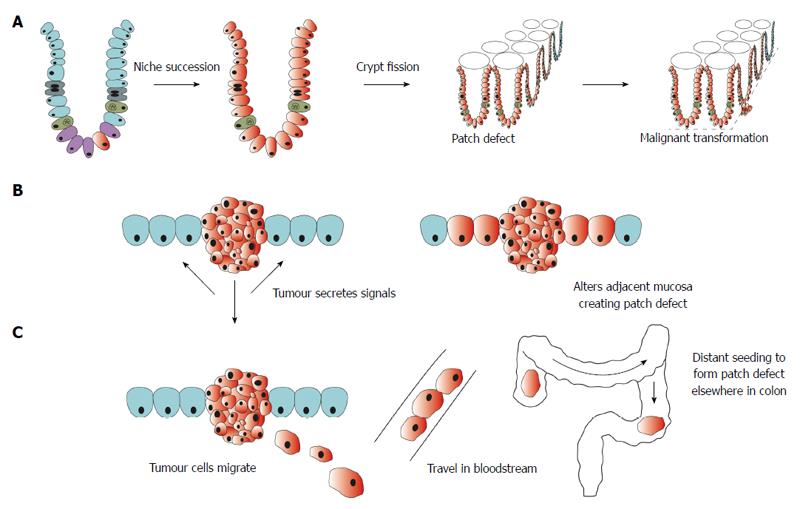Copyright
©The Author(s) 2015.
World J Gastroenterol. Apr 7, 2015; 21(13): 3763-3772
Published online Apr 7, 2015. doi: 10.3748/wjg.v21.i13.3763
Published online Apr 7, 2015. doi: 10.3748/wjg.v21.i13.3763
Figure 1 Schematic representation of proposed mechanisms for formation of field defect.
A: A mutation or epigenetic alteration in a stem cell (depicted in red) is inherited by all cells within the crypt through niche succession. Crypt fission results in several crypts becoming biologically altered creating a patch defect. Further mutation within this field of altered mucosa leads to malignant transformation; B: Tumour secretes chemical signals that alter the adjacent mucosa resulting in a field defect; C: Malignant cells shed from a tumour travel in the bloodstream and seed in a distant site rendering the mucosa susceptible to malignant transformation.
- Citation: Patel A, Tripathi G, Gopalakrishnan K, Williams N, Arasaradnam RP. Field cancerisation in colorectal cancer: A new frontier or pastures past? World J Gastroenterol 2015; 21(13): 3763-3772
- URL: https://www.wjgnet.com/1007-9327/full/v21/i13/3763.htm
- DOI: https://dx.doi.org/10.3748/wjg.v21.i13.3763









